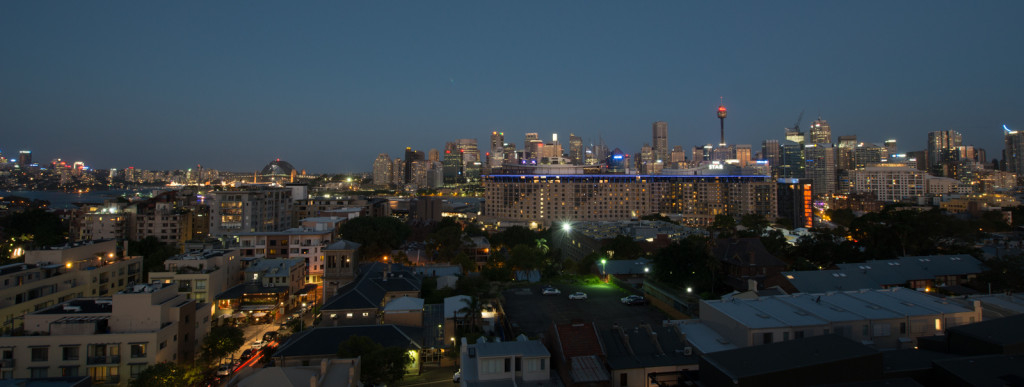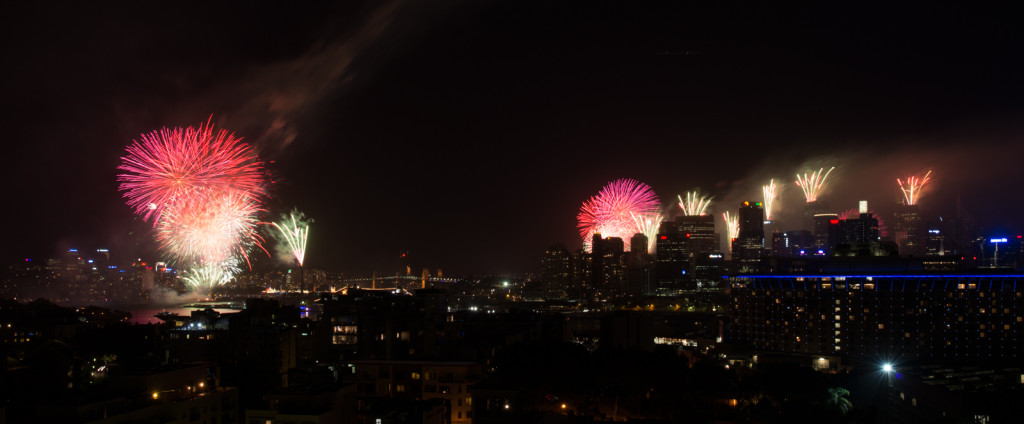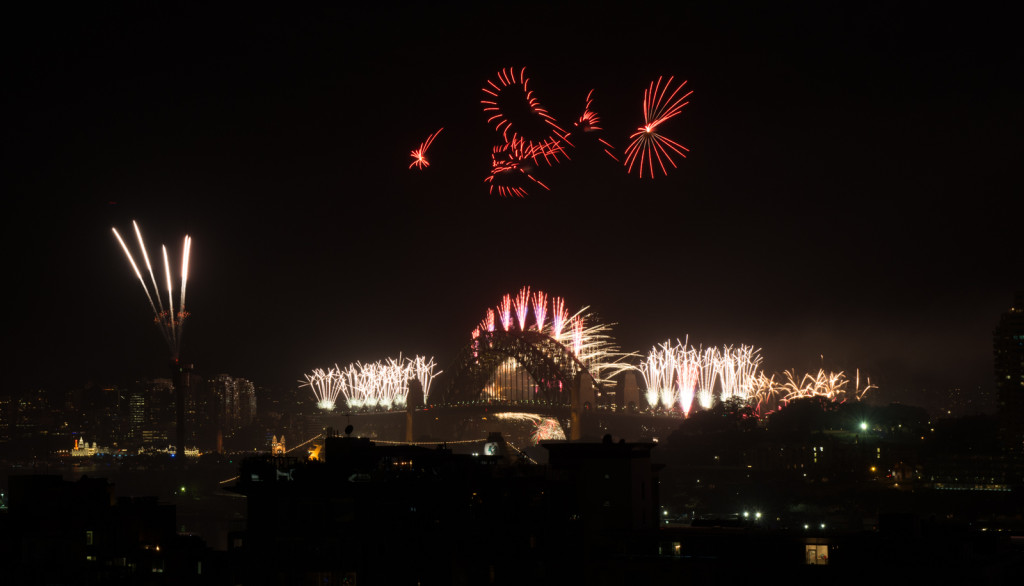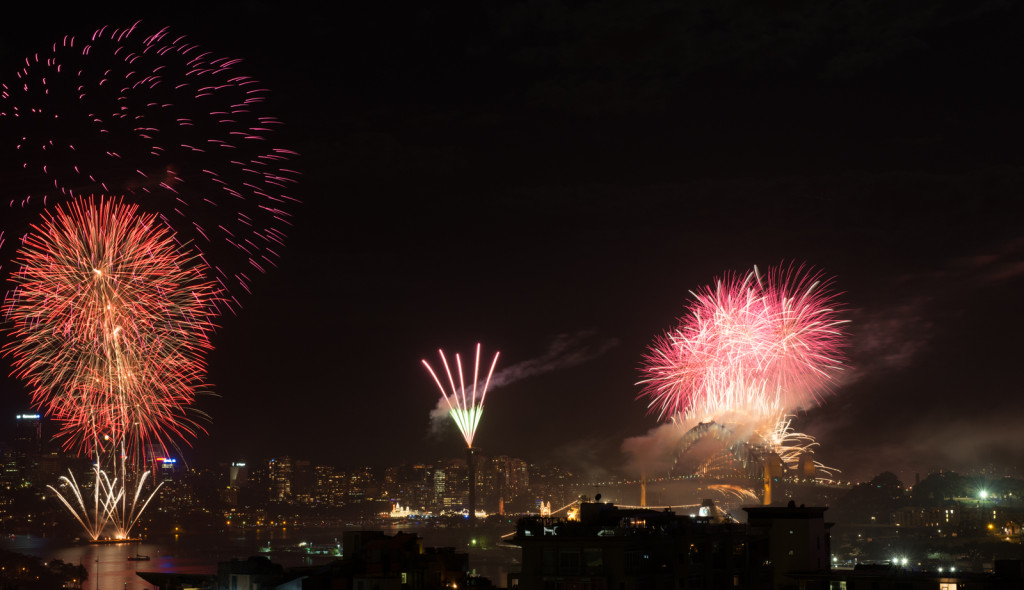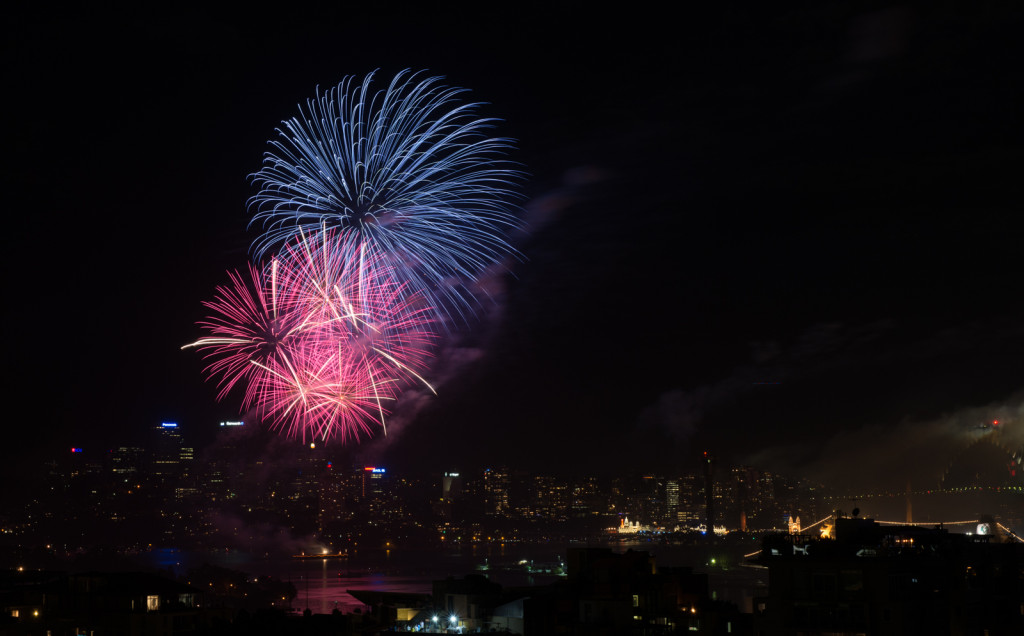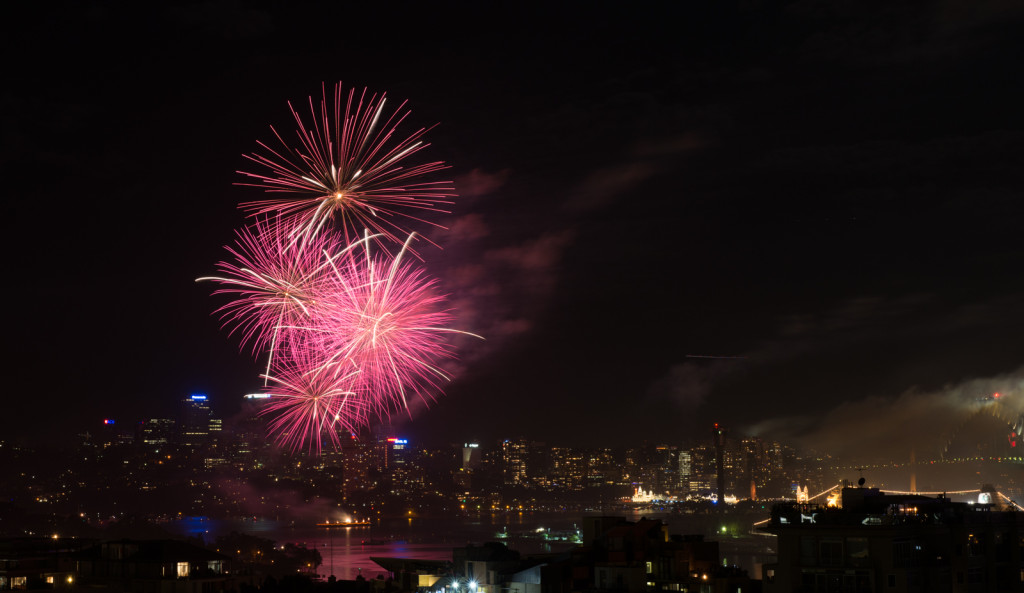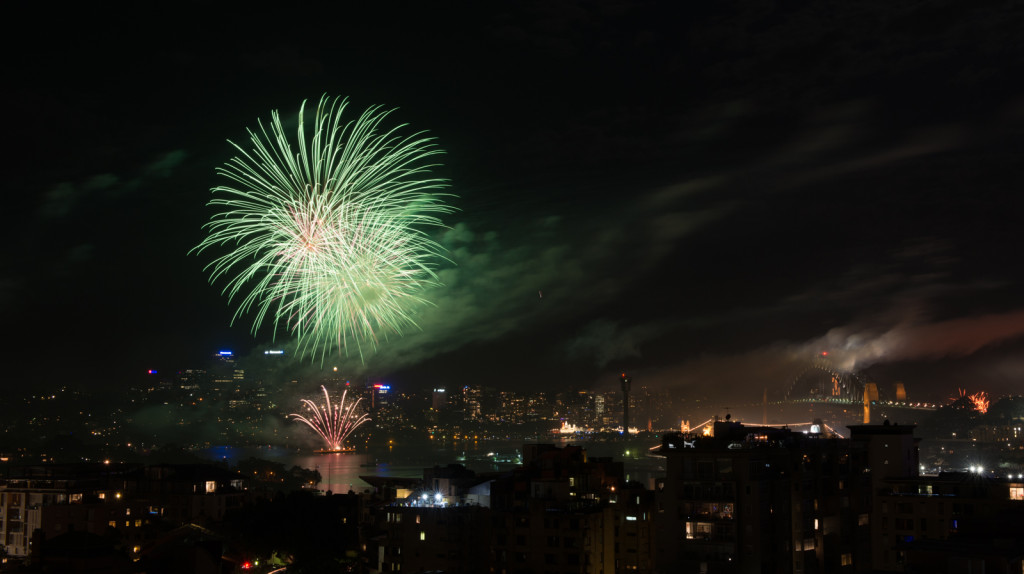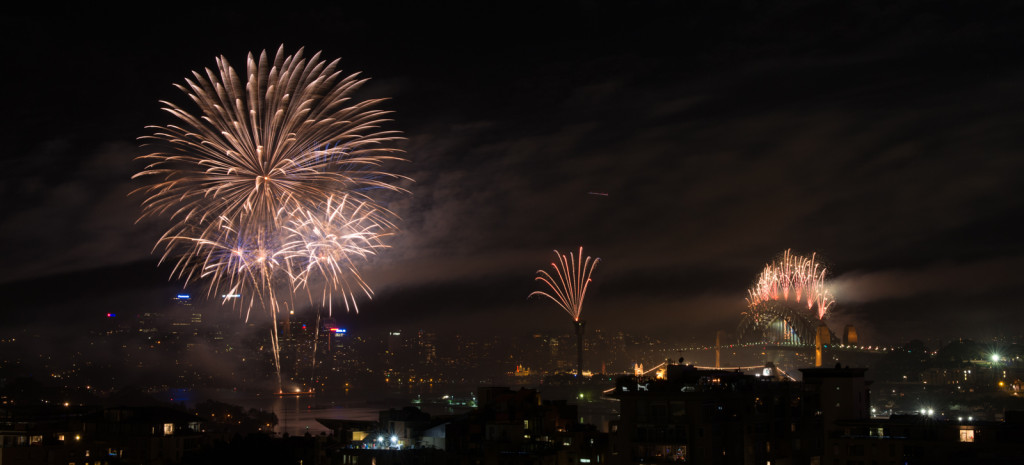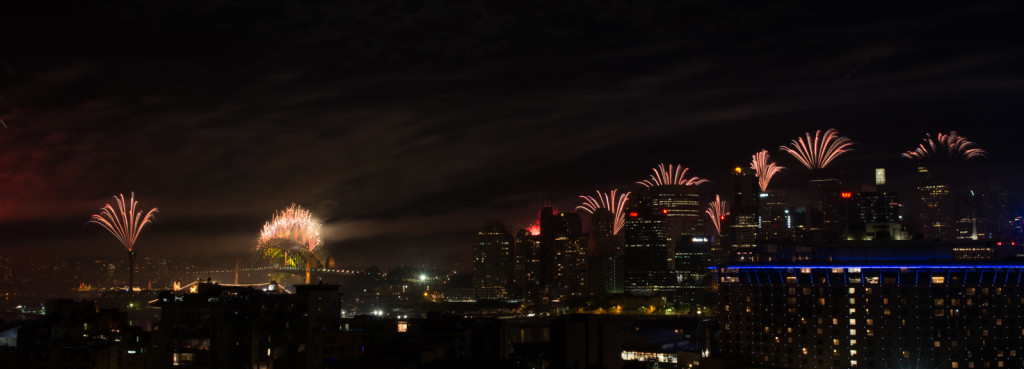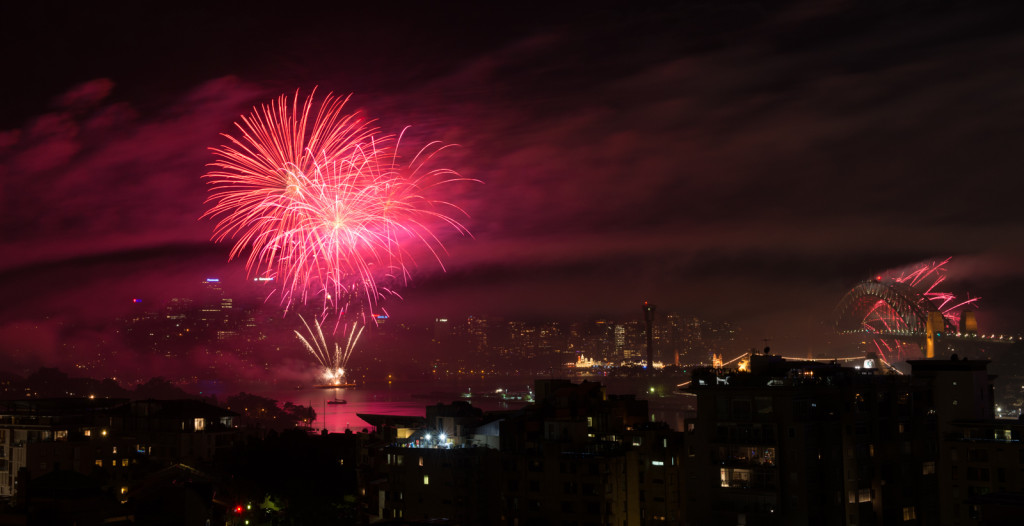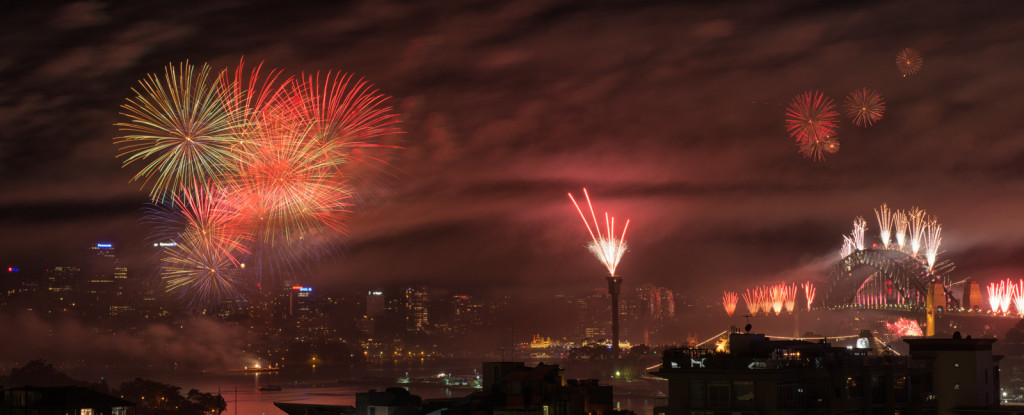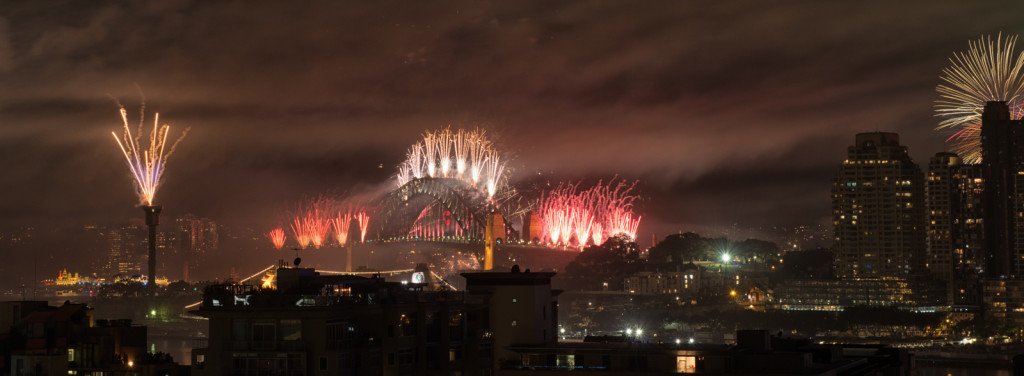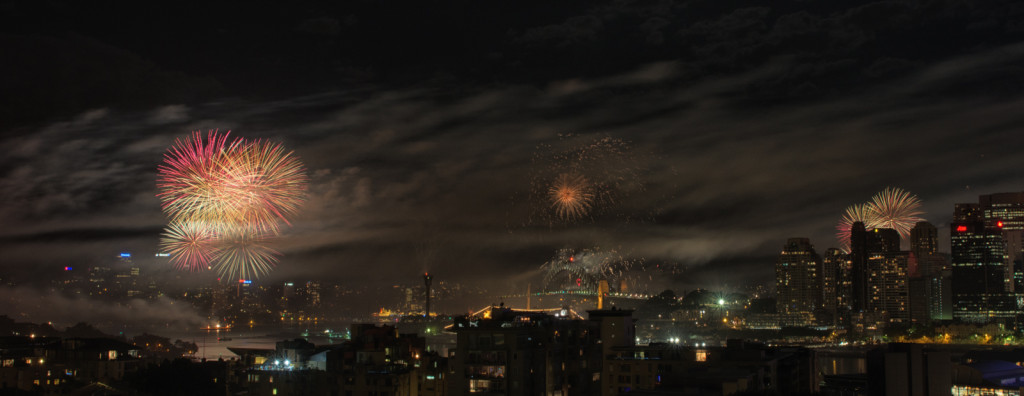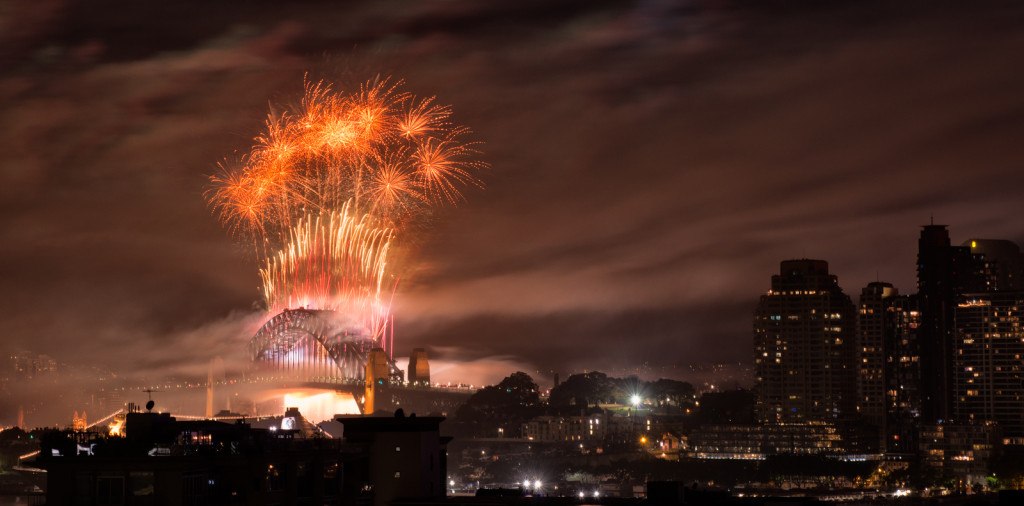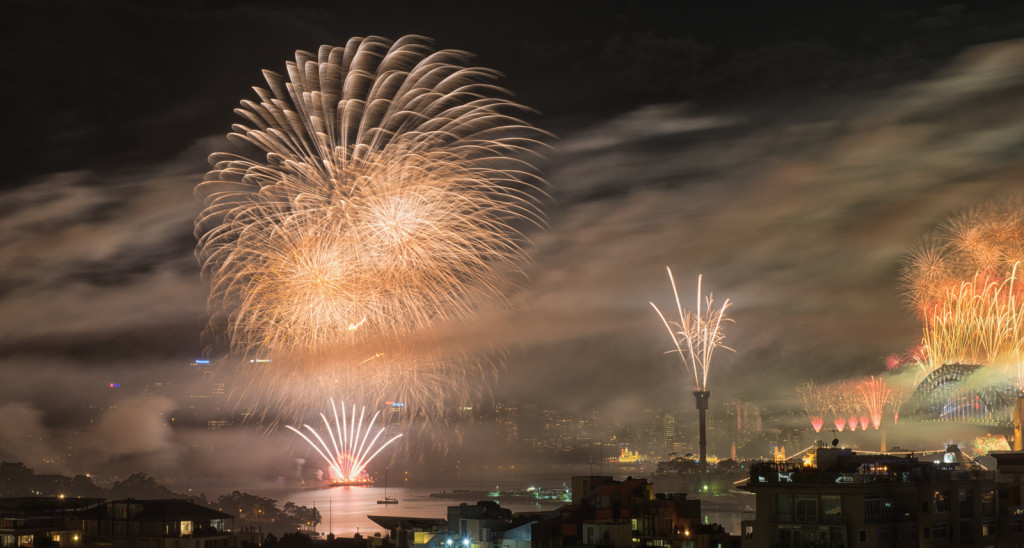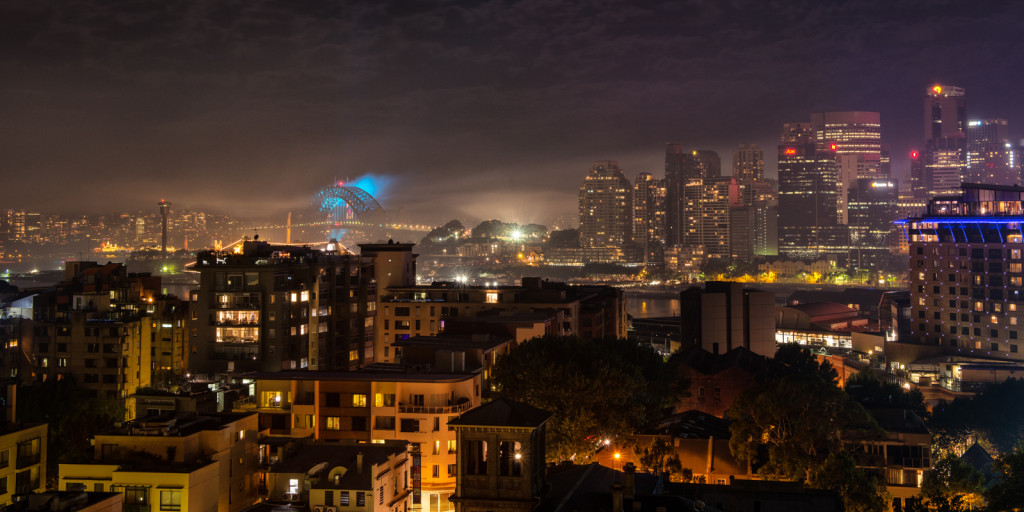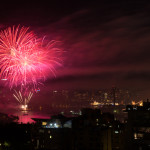
I’ve never had much success photographing fireworks but then again I’d never really paid much attention to doing it properly and just used the automatic camera functions in the past. All I ever managed to end up with was a lot of useless pictures that I ended up deleting. Now, when you live in a city like Sydney which has one of the best New Year’s Eve fireworks displays it’s criminal for a photographer to not take it seriously so I made a pact for Dec 31, 2012 to make a real effort to do it properly. I always wondered why some fireworks shots look absolutely spectacular so after a lot of research on the Web there were a couple of fairly obvious tips and techniques that I decided to try:
- you must use a sturdy tripod
- set your focus to manual and pre-focus on where the fireworks will be exploding. It should be close to infinity and with the recommended aperture that’s close enough
- set aperture to at least f/14. This is critical to ensure you get the right exposure with the shutter open long enough to capture the full starburst but not get too much light so as to over expose the image
- set ISO 200, or ISO 100 if you’re camera supports it
- set camera to bulb (so you can control how long the shutter will stay open)
- use a remote cable release to open the shutter and keep it open for the desired period
All the research said the hardest bit was deciding when to open the shutter and when to close it again, but in the end I didn’t find this to be that hard. If you watch carefully you can see the shell containing the fireworks as it’s propelled skywards. It’s then a matter of estimating just when it’s going to explode, opening the shutter and holding it open until that particular explosion has reached its extremities so you get the tracer lines captured for the full star burst. I found that this was generally somewhere in the range of 4.5 – 5.5 secs. I think for my next opportunity at photographing fireworks I’ll set the aperture to f/16 and keep the shutter open slightly longer.
There’s a lot of trial and error but the results I got this past New Year’s Eve were by far and away the best ever. Still a lot of improvement to do but I’m now on the path to much better fireworks photographs. Just remember that the most critical variable is manually opening the shutter for the required period and then adjusting aperture and film speed to adjust exposure.
I hope you enjoy the following shots taken from a friend’s balcony in Pyrmont, Sydney. Camera is a Nikon D800E with Nikkor 24-70mm f/2.8 lens.
